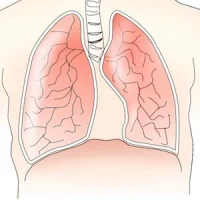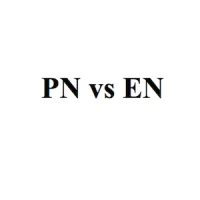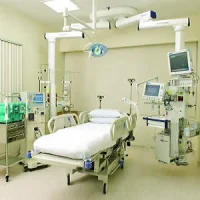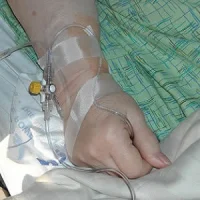ICU-acquired weakness (ICAUW) in some patients can last a long time, even when the biologic functions that cause muscles to waste have returned to normal. A pilot study led by respirologist Dr. Jane Batt, MD, PhD (pictured), from the Keenan Research Centre for Biomedical Science at St. Michael’s Hospital, Toronto, Canada, found that long term muscle dysfunction is caused by impaired regrowth, which is associated with a decrease in satellite cells, the precursors to muscle cells. The findings highlight that the biology of the muscle can be durably and even definitely altered by critical illness and point to future research on potential pharmacological therapies. The study is published in the American Journal of Respiratory and Critical Care Medicine.
In an email to ICU Management & Practice, Dr. Batt explained that this research set out to begin to identify the problems in muscle in the long term survivor with chronic weakness, on a cellular and not just physiologic level, and in a comprehensive manner not previously performed. The research comprised a nested prospective study of critically ill patients, who were mechanically ventilated for at least 1 week, and serially assessed over 6 months after ICU discharge, the time at which functional recovery plateaus. 27/82 patients consented; 15 and 11 were assessed at 7 days and 6 months after ICU discharge respectively. The researchers concurrently serially assessed patients’ physical functional outcomes (baseline DASI, Functional Independence Measure motor subscore, 6MW distance), muscle strength and voluntary contractile capacity, muscle size (whole quads and myofibre type specific cross-sectional area), muscle and nerve electrical function (EMG, nerve conduction studies), and performed muscle biopsies to begin to evaluate cellular and molecular phenomenon known to be associated with muscle degradation and strength (UPS mediated proteolysis, autophagy, inflammatory infiltrate, capillarization, satellite cell count, mitochondrial content and size). Dr. Batt noted that the cellular and molecular analyses were completed on muscle obtained via percutaneous biopsy – less than the size of the fingernail on the little finger.
Key Findings
"While satellite cells are not required for existing muscle fibres to grow in size, they are essential for the regeneration of injured muscle," said Dr. Batt. "Critical illness appears to permanently change muscle biology so your regenerative capacity seems to be lost," she added.
See Also: Mechanical Ventilation Linked to Long-Term Disability
Dr Batt acknowledged that the limited sample size may underpower some comparisons and will require further investigation with larger populations. This was a reflection of the difficulty in conducting long-term mechanistic studies with critical illness survivors.
Dr. Batt outlined what the foci for follow-up studies might be:
“Muscle size increases by increase in existing myofibre size (hypertrophy) by generating more component proteins, as well as by generating new fibres through satellite cell recruitment. First, researchers have a good understanding of the cellular signalling networks that induce muscle fibre hypertrophy, These need to be looked in the long term critical illness survivor to see if they operate normally, and if not, where the problem exists. This provides potential targets for manipulation to help increase muscle mass. If everything looks alright, then there may be novel regulators of muscle mass that are at play and need to be identified, so intervention at the molecular level can be designed. Second; the satellite cells in our patients were decreased in number; we do not know why. We also do not know anything about their function. They may be decreased in number but function supranormally, normally or abnormally. To determine whether the association of decreased number is mechanistic in regards to impaired growth, these questions need to be answered, and once answered we will know whether attempting to target their activation, proliferation and differentiation is a viable option for enhancing muscle mass recovery after loss in the ICU.
“There is another issue here, in that those who reconstituted their muscle size, did not normalise their strength. So there is this other side to the story – why, in some cases, does the muscle that grows back, not resume its strength?”
In terms of potential therapies, Dr. Batt explained that the cellular signalling networks that regulate muscle mass and contractility are intertwined, but can potentially be targeted individually, enabling pharmacologic therapies to be specifically directed to address atrophy, impaired contractility or both. While targeting selective inhibition of UPS mediated skeletal muscle proteolysis may be a potential therapeutic intervention for patients during the early proteolytic phase of ICUAW, this will not be appropriate in patients with prolonged non-resolving ICUAW, where the problem is compromised muscle growth and not ongoing enhanced proteolysis, she said. Moreover, attempts at reconstitution of muscle mass may be less successful in those patients with satellite cell loss, relying predominantly on hypertrophic growth, nor may they mitigate weakness in those patients with decreased strength due to (mass-independent) contractile dysfunction, she added.
The study is the first phase of the MEND ICU research program, led by Dr. Batt and Dr. Claudia dos Santos, an intensivist at St. Michael's. The primary goal of MEND ICU is to assist in developing effective therapies/measures for the chronically weak and debilitated critical illness survivor. MEND ICU is part of the RECOVER program spearheaded by Dr Margaret Herridge, a multi-centre study that evaluates patient and caregiver outcomes after prolonged mechanical ventilation with a goal of developing a family-centred rehabilitation program after severe critical illness.
Phase 2 of MEND-ICU will have 2 arms. Having determined that ongoing muscle proteolysis is not what is responsible for persistent atrophy, and that the problem in many patients is reqrowth after loss in the ICU, the researchers aim to identify the cellular and molecular processes that contribute to, and are responsible for, the impaired muscle hypertrophic growth response, in addition to evaluating the function of the depleted satellite cell pool and to begin to understand the reason(s) for their loss. The second arm will evaluate the mechanisms underlying the dissociation between full recovery of muscle strength in those patients who are actually able to recover muscle mass. Dr. Batt noted that while for example mitochondrial number normalised over time in all patients, they did not evaluate mitochondrial function. Ultimately the long term goal, and final phase, will be to identify and trial potential pharmacologic interventions, based on results in phase 2, to restore muscle strength in the survivor.
Claire Pillar
Managing editor, ICU Management & Practice
Sources and image credit: St. Michael’s Hospital; author email.
In an email to ICU Management & Practice, Dr. Batt explained that this research set out to begin to identify the problems in muscle in the long term survivor with chronic weakness, on a cellular and not just physiologic level, and in a comprehensive manner not previously performed. The research comprised a nested prospective study of critically ill patients, who were mechanically ventilated for at least 1 week, and serially assessed over 6 months after ICU discharge, the time at which functional recovery plateaus. 27/82 patients consented; 15 and 11 were assessed at 7 days and 6 months after ICU discharge respectively. The researchers concurrently serially assessed patients’ physical functional outcomes (baseline DASI, Functional Independence Measure motor subscore, 6MW distance), muscle strength and voluntary contractile capacity, muscle size (whole quads and myofibre type specific cross-sectional area), muscle and nerve electrical function (EMG, nerve conduction studies), and performed muscle biopsies to begin to evaluate cellular and molecular phenomenon known to be associated with muscle degradation and strength (UPS mediated proteolysis, autophagy, inflammatory infiltrate, capillarization, satellite cell count, mitochondrial content and size). Dr. Batt noted that the cellular and molecular analyses were completed on muscle obtained via percutaneous biopsy – less than the size of the fingernail on the little finger.
Key Findings
- Persistent weakness 6 months post ICU discharge correlated with sustained physical functional impairment - 73% of patients (8/11) demonstrated persistent quadriceps atrophy 6 months following ICU discharge
- Muscle atrophy was sustained in the majority of patients 6 months after ICU discharge
- Muscle mass did not correlate with resolution of weakness, due to persistent impaired voluntary contractile capacity
- Electrophysiologic testing detected persistent myopathy at 6 months
- Quadriceps wasting at 6 months was not associated with UPS mediated muscle proteolysis.
- Altered autophagy was not evident in atrophic quadriceps
- Decreased Satellite Cell Content Associated with Persistent Muscle Atrophy
- Quadriceps mitochondrial content normalised despite sustained weakness
"While satellite cells are not required for existing muscle fibres to grow in size, they are essential for the regeneration of injured muscle," said Dr. Batt. "Critical illness appears to permanently change muscle biology so your regenerative capacity seems to be lost," she added.
See Also: Mechanical Ventilation Linked to Long-Term Disability
Next Steps
Dr Batt acknowledged that the limited sample size may underpower some comparisons and will require further investigation with larger populations. This was a reflection of the difficulty in conducting long-term mechanistic studies with critical illness survivors.
Dr. Batt outlined what the foci for follow-up studies might be:
“Muscle size increases by increase in existing myofibre size (hypertrophy) by generating more component proteins, as well as by generating new fibres through satellite cell recruitment. First, researchers have a good understanding of the cellular signalling networks that induce muscle fibre hypertrophy, These need to be looked in the long term critical illness survivor to see if they operate normally, and if not, where the problem exists. This provides potential targets for manipulation to help increase muscle mass. If everything looks alright, then there may be novel regulators of muscle mass that are at play and need to be identified, so intervention at the molecular level can be designed. Second; the satellite cells in our patients were decreased in number; we do not know why. We also do not know anything about their function. They may be decreased in number but function supranormally, normally or abnormally. To determine whether the association of decreased number is mechanistic in regards to impaired growth, these questions need to be answered, and once answered we will know whether attempting to target their activation, proliferation and differentiation is a viable option for enhancing muscle mass recovery after loss in the ICU.
“There is another issue here, in that those who reconstituted their muscle size, did not normalise their strength. So there is this other side to the story – why, in some cases, does the muscle that grows back, not resume its strength?”
In terms of potential therapies, Dr. Batt explained that the cellular signalling networks that regulate muscle mass and contractility are intertwined, but can potentially be targeted individually, enabling pharmacologic therapies to be specifically directed to address atrophy, impaired contractility or both. While targeting selective inhibition of UPS mediated skeletal muscle proteolysis may be a potential therapeutic intervention for patients during the early proteolytic phase of ICUAW, this will not be appropriate in patients with prolonged non-resolving ICUAW, where the problem is compromised muscle growth and not ongoing enhanced proteolysis, she said. Moreover, attempts at reconstitution of muscle mass may be less successful in those patients with satellite cell loss, relying predominantly on hypertrophic growth, nor may they mitigate weakness in those patients with decreased strength due to (mass-independent) contractile dysfunction, she added.
The study is the first phase of the MEND ICU research program, led by Dr. Batt and Dr. Claudia dos Santos, an intensivist at St. Michael's. The primary goal of MEND ICU is to assist in developing effective therapies/measures for the chronically weak and debilitated critical illness survivor. MEND ICU is part of the RECOVER program spearheaded by Dr Margaret Herridge, a multi-centre study that evaluates patient and caregiver outcomes after prolonged mechanical ventilation with a goal of developing a family-centred rehabilitation program after severe critical illness.
Phase 2 of MEND-ICU will have 2 arms. Having determined that ongoing muscle proteolysis is not what is responsible for persistent atrophy, and that the problem in many patients is reqrowth after loss in the ICU, the researchers aim to identify the cellular and molecular processes that contribute to, and are responsible for, the impaired muscle hypertrophic growth response, in addition to evaluating the function of the depleted satellite cell pool and to begin to understand the reason(s) for their loss. The second arm will evaluate the mechanisms underlying the dissociation between full recovery of muscle strength in those patients who are actually able to recover muscle mass. Dr. Batt noted that while for example mitochondrial number normalised over time in all patients, they did not evaluate mitochondrial function. Ultimately the long term goal, and final phase, will be to identify and trial potential pharmacologic interventions, based on results in phase 2, to restore muscle strength in the survivor.
Claire Pillar
Managing editor, ICU Management & Practice
Sources and image credit: St. Michael’s Hospital; author email.
References:
Dos Santos C, Hussain SN, Mathur S, Picard M, Herridge M, Correa J,
Bain A, Guo Y, Advani A, Advani SL, Tomlinson G, Katzberg H, Streutker
CJ, Cameron JI, Schols A, Gosker H, Batt J; MEND ICU group, the RECOVER
Program investigators and the Canadian Critical Care Translational
Biology Group (2016) Mechanisms of chronic muscle wasting and dysfunction after an intensive care unit stay: a pilot study. Am J
Respir Crit Care Med, Apr 8. [Epub ahead of print]
Latest Articles
muscle function, critically ill
A pilot study led by respirologist Dr. Jane Batt , MD, PhD, from the Keenan Research Centre for Biomedical Science at St. Michael’s Hospital, Toronto, Canada, found that long term muscle dysfunction is caused by impaired regrowth, which is associated wit










